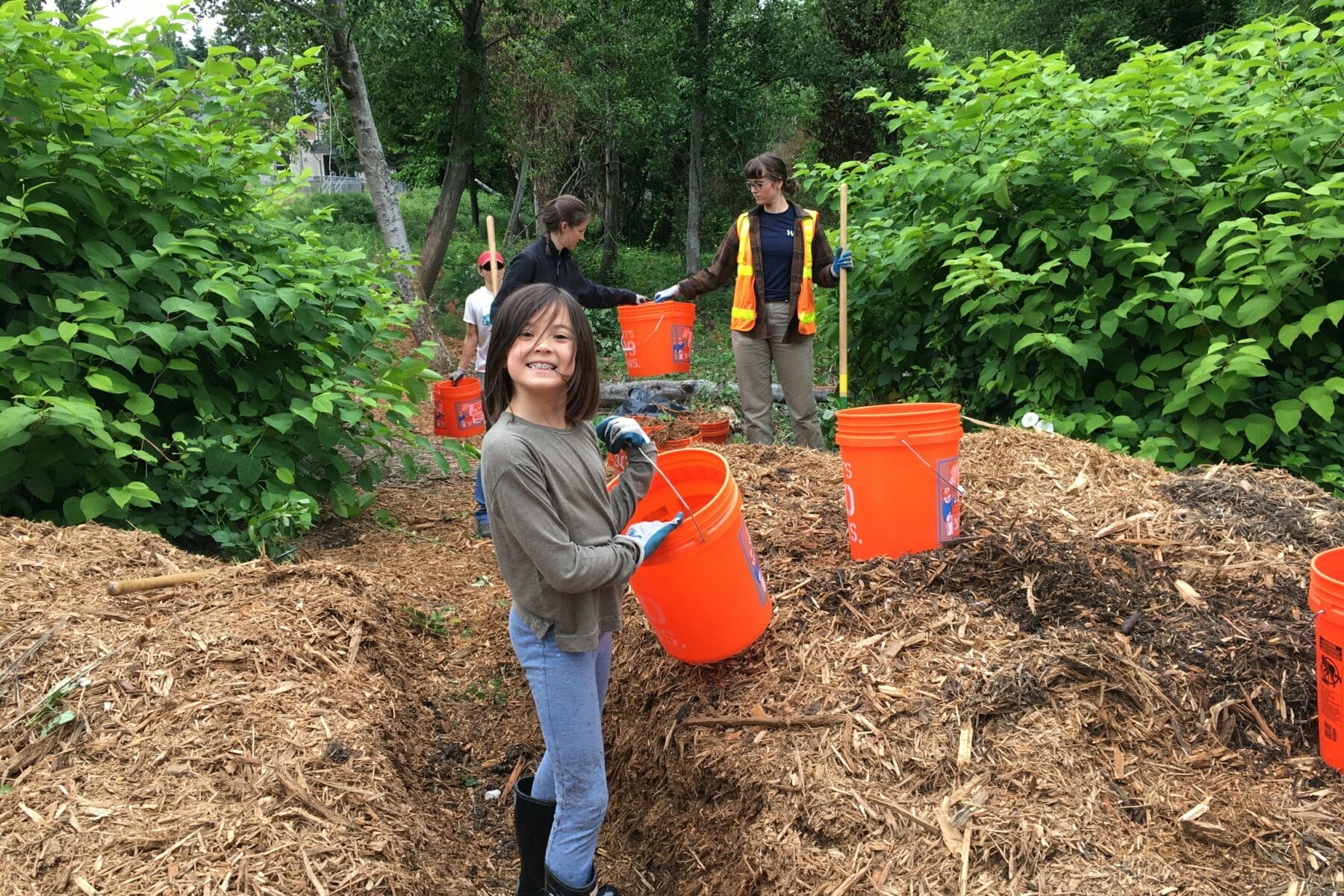Restoration Work at Ballinger Open Space
Imagine this: you come home after a long day. The sun is shining, and you want to go outside, but can’t go too far. Right in your backyard is a green space with a small creek running through it and a lot of tall trees with big shady leaves in the summer. Problem is, it’s overrun with a dense thicket of thorny blackberry and no creek in sight (even though you can hear it running).
Ballinger Open Space makes up 2.6 acres (about the area of a Manhattan city block) of green space in the northeast corner of Shoreline, at the nexus of Interstate 5 and State Highway 104. Its urban location makes it especially vulnerable to the surrounding environment. Ballinger Creek runs through the open space and flows into a series of narrow culverts and pipes as it moves toward Lake Washington. During the winter, leafless deciduous trees also provide very little barrier for capturing rainfall. When all of these forces unite, it leads to eroding banks and flooded drainages which flow into Lyons Creek, a salmon–bearing stream, then to Lake Washington, and ultimately to Puget Sound.
In addition to environmental threats creating ecological needs, for neighbors of Ballinger Open Space there is also a human need. The city has more substantial parks and open spaces on the western side. Gradually, as one moves east and north across the city, parks become less common. Ballinger Open Space’s location on the eastern side of the city will provide more greenspace to residents. The City of Shoreline has a diverse population: 30% of its residents identify as people of color; 46% of students in Shoreline School District identify as youth of color; one in five residents are foreign-born; and one in four speak a non-English language in the home. Restoration of Ballinger Open Space is one way for under-served communities in Shoreline to have more access to green open space.

The City of Shoreline, recognizing the confluence of these factors, reached out to the Greenway Trust to help find opportunities to improve the conditions of this open space, and has been a key partner in the project’s implementation and success, helping coordinate restoration activities, removal of trash and debris, and helping secure mulch to support the effort. That’s the power of collaboration and striking balance between human and environmental needs.
The project is made possible through the support of many different partners. City Forest Credits (CFC) created a program that recognizes the many benefits of trees planted for urban forest improvement, and looks to create a market for these credits that will release funding for maintenance as the trees grow. Bank of America, American Forests, King County Flood Control District and King County Wastewater Treatment Division, The Nature Conservancy, and Carter Subaru funded the initial tree planting. And, the Mountains to Sound Greenway Trust’s staff and volunteers have launched the project on the ground, removing invasives and planting and maintaining the young trees. The Greenway went door-to-door (pre-pandemic) to invite local neighbors to take part in the restoration activities near their homes. In the past three years, we have installed thousands of trees and shrubs, with an emphasis on conifer trees, as a cost-effective flood-stormwater management method. These trees will one day provide food and habitat for local critters with an evergreen canopy that protects the soil from sun and rain. As these trees grow, they are symbols of the power of collaboration – proof that there can be a balance between human and environmental needs across our cities.
So, now imagine this: you come home after a long day. The sun is shining, and you’d like to sit outside for a little bit. Right in your backyard, you see tall evergreen trees and a nice, shaded spot by the creek surrounded by green shrubs with beautiful flowers. Perfect for you to capture a relaxing moment.





